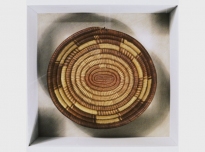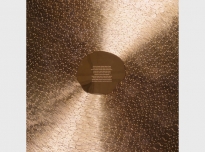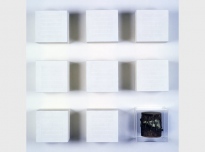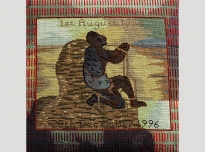Hold 1995
Brighton Museum & Art Gallery and Tour
Hold was made possible with the aid of the first South East Arts Major Award to a visual artist and was the first of a series of exhibitions engaging with non-Western art collections. Contextual research was undertaken within Brighton Museum's Non-Western Art collection during 1994-95, with the permission of Dr. Anthony Shelton, then Keeper of Non-Western Art & Anthropology at the Royal Pavilion, Art Gallery & Museums. Additional research was carried out with the Mass Observation Archive at the University of Sussex and the International Boundaries Research Unit (IBRU) at Durham University. The exhibition consequently toured to two further venues.
The title Hold was chosen for its diverse associations and relevance to museum collections. As stated in the catalogue "Museums hold exhibitions which hold boxes which hold objects which hold meanings" (Hilty, 1995, p.30)1
Hold addressed the display of ethnographic objects within the gallery context by the direct incorporation of works of African origin and was acknowledged as a significant contribution to contemporary debates surrounding the representation of non-Western art. In his catalogue essay Shelton concisely observes that
[Chubb] incorporates and re-shapes non-Western pieces to make explicit meanings noted neither by the museum nor the indigenous manufacturer. The objects form an integral part of each installation constructed around them. The ethnographic objects are in each case the starting point for a larger work which draws out and develops the elliptical meanings generated and existing in an intercultural space between societies and historical periods. (1995, p. 23)2
Initial explorations within the museum stores yielded an item of particular relevance to this developing body of practice, namely a section slice of a mango tree bearing a brass plaque upon which was inscribed the legend
Piece of the mango tree
cut down in October 1930
under which
Henry M. Stanley
met
David Livingstone
at Ujiji
Lake Tanganyika
Central Africa
November 10th 1871
The plaque fossilized a seminal meeting that had become indicative of a particularly enduring sense of cultural identity born of this catalytic phase of colonial expansion and still evident within the majority of regional ethnographic collections within the U.K. The plaque became the literal and metaphorical centre of the exhibition, where physical and conceptual meaning indicated by its provenance consequently dictated both the materials and size of the respondent artwork. This direct use of objects involved ongoing consultation with museum conservators and agreement on the incorporation and presentation of sensitive objects in close proximity to a variety of (in museum terms), problematic materials such as wax, brass, cloth and milk powder. Each artefact was indicative of the wider social structure of the communities that produced them. The role of the media in shaping contemporary understanding and appraisal of non-Western cultures was indicated through the use of specific reports on current conflicts within contemporary African states. In addition the casing and presentation of the work cross-referenced museological modes of display and the resulting accumulation of artefact, material, and presentation both mimicked and critiqued the museum context through an acknowledgment of the past and consideration of the shifts and changes in history that lead the viewer to the present.
In turn each work commented on trans-cultural human experiences such as exchange, conflict and the family, and simultaneously used this commonality of experience to question broader cultural issues such as the acquisition, representation and perception of non-Western artefacts.3
1 Hilty, G. , Reason, D. & Shelton, A. (1995) Hold, Acquisition, Representation, Perception Work by Shirley Chubb Brighton: The Royal Pavilion, Art Gallery & Museums
2 Ibid
3 Ibid, catalogue title
Text © Shirley Chubb, 2011

















